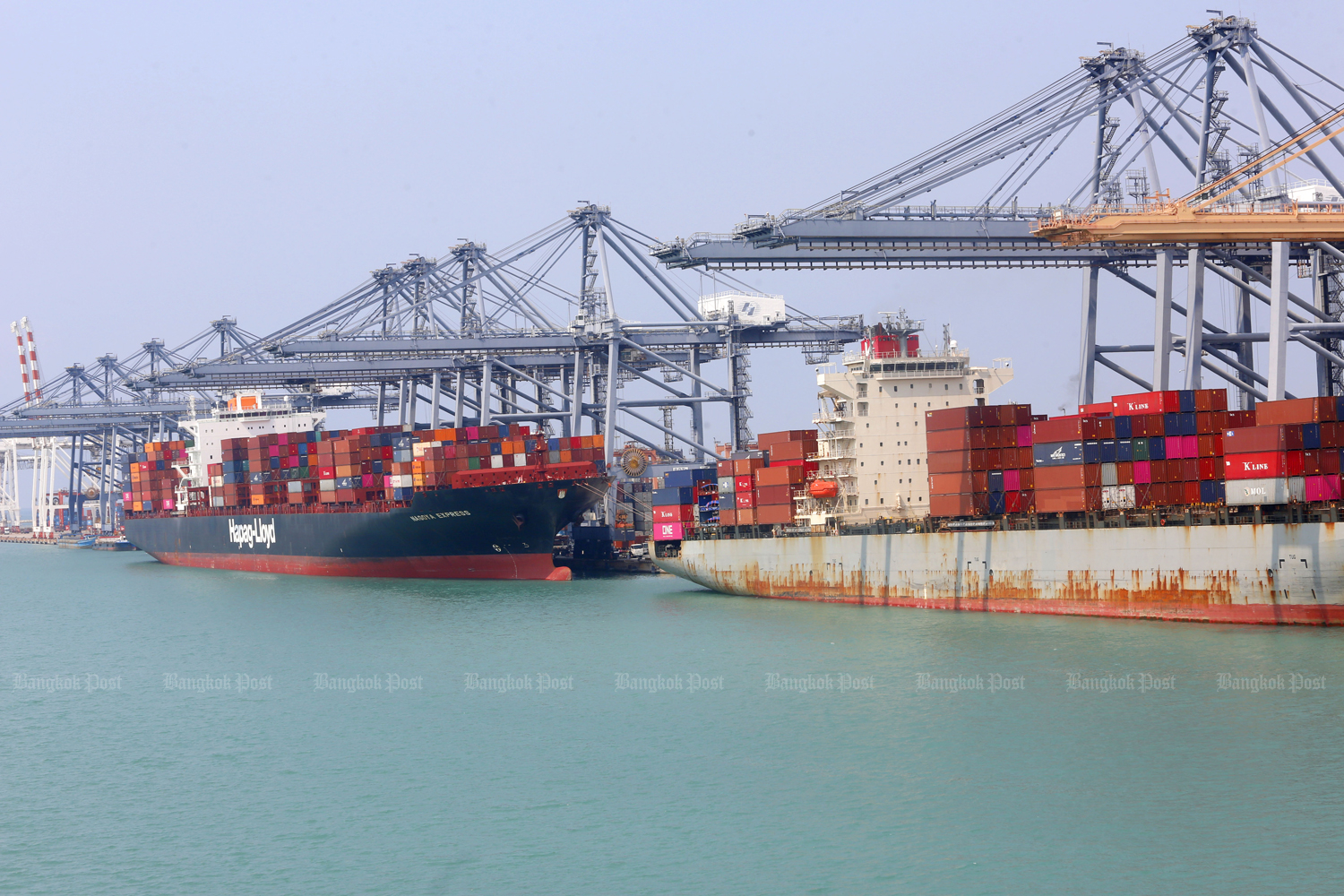
Thailand's export prospects look gloomier, with a likely contraction this year after the Commerce Ministry reported on Friday that figures were down for a third straight month in May.
Ghanyapad Tantipipatpong, chairwoman of the Thai National Shippers' Council (TNSC), said that given the impact of the US-China trade war, the global economic slowdown and the strengthening baht, export growth of 1% this year as forecast by the council will be hard to achieve and a contraction is highly likely.
"May's export fall was largely due to the world's slowing economy and the strong baht, which weakened Thai exports' competitiveness," she said, urging the Bank of Thailand to rein in the domestic currency's strength.
"The central bank should not worry too much about the US's watch list for currency manipulation," Ms Ghanyapad said. "It should rather focus on overseeing exporters' competitiveness. If overall exporters see losses from exports, it will become a big problem for the country in the future."
The TNSC slashed its export growth forecast to 1% this year on June 4 from 3% seen in April, citing a number of risk factors, including the global economic slowdown and the ongoing trade spat between China and the US that has disrupted supply chains.
The Commerce Ministry reported yesterday that customs-cleared outbound shipments fell by 5.8% year-on-year in May to US$21.01 billion after contracting 2.6% in April and 4.9% in March. Exports in baht terms fell 4% year-on-year to 663.647 billion baht.
Exports to most markets continued to ebb, owing to the global trade slowdown and US-China disputes.
"These ongoing situations create tension and an uncertain trade environment that weaken Thai exports and the global economy, including Thai trading partners," said Pimchanok Vonkorpon, director-general of the Trade Policy and Strategy Office.
Shipments to Australia fell 17% in May from a year earlier, followed by those to Asean (-10.2%), the EU (-8.6%), China (-7.2%) and the Middle East (-6.1%). However, exports to the US rose 7.8% from May last year.
According to the Commerce Ministry, exports of agricultural and agro-industrial products reverted to a contraction of 1.4% in May to $3.58 billion after expanding in April and March. The fall was led by rice (-13.3%), rubber (-10%) and canned tuna (-6.3%).
Shipments of industrial products contracted for a third straight month, down 5.8% year-on-year in May to $16.6 billion, dragged by gold (-61.7%), computers and components (-10.6%), automobiles and parts (-17.2%) and electrical circuits (-16.4%).
In May, imports shrank 0.6% year-on-year to $20.83 billion, yielding a trade surplus of $181.5 million.
For the first five months, exports decreased by 2.7% to $101.56 billion.
Imports shrank nearly 1% to $100.83 billion, yielding a trade surplus of $731 million for the period.
"There are challenging external factors for Thai exports in 2019 from unresolved trade disputes between the US and China, exchange rate volatility, trade policy uncertainty and new FTAs that will come into force this year," Ms Pimchanok said.
Tim Leelahaphan, an economist at Standard Chartered Bank Thai, said May's exports reflected the impact of the US-China trade war on industrial exports, as well as the impact of the strong baht -- particularly on agricultural exports, with rice orders weakening.